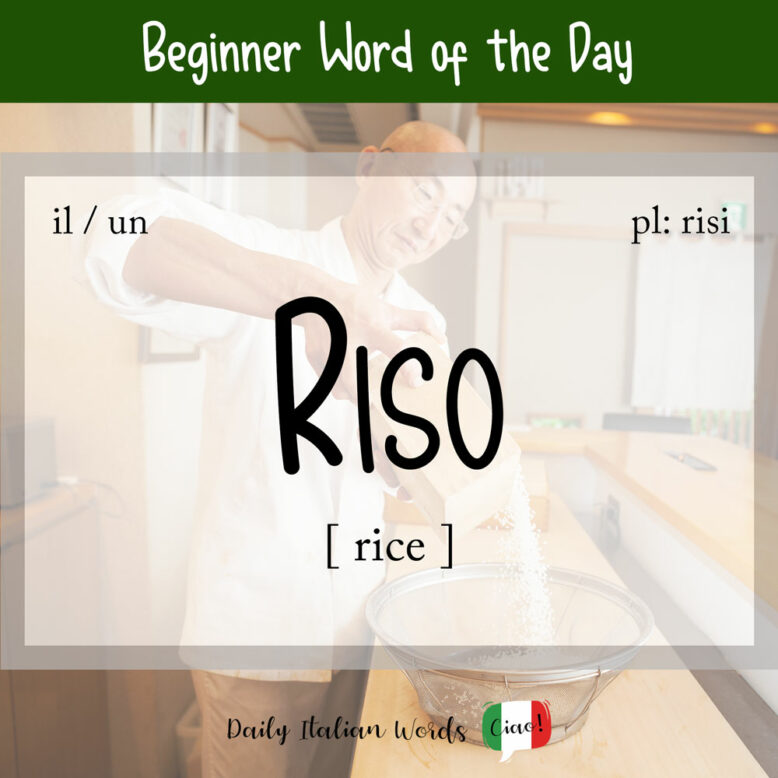A staple food of Italian cooking is rice or riso in Italian.

In particular, it is used in the popular dish risotto which can be made with any variety of short-grain rice including Aroborio, Carnaroli, Vialone, Nano, and Baldo. Unlike other kinds of rice, the short-grain kind has a higher starch content and absorbs less liquid, which is what gives risotto its characteristic sticky texture.
Quale tipo di riso dovrei usare per preparare il risotto?
Which type of rice should I use to prepare risotto?

Below are some other kinds of rice you might come across in Italy:
- riso integrale = brown rice
- riso basmati = basmati rice
- riso fritto = fried rice
- riso a grani lunghi = long-grain rice
- riso soffiato = puffed rice
- riso rosso = red rice
- riso da sushi = sushi rice
- riso selvatico = wild rice
Preferisco il riso alla pasta. E tu?
I prefer rice to pasta. How about you?
You can also find and make numerous products made from rice including latte di riso (rice milk), farina di riso (rice flour), dolce di riso (rice pudding), minestra di riso (rice soup), galletta di riso (rice cake), vino di riso (rice wine or sake) and carta di riso (rice paper).
Did you know that…?
Il riso è il cereale più consumato nel mondo. Rice is the most widely consumed grain in the world.
Riso has a second meaning in Italian that has nothing to do with food: the word laughter. It is also the past participle of the verb ridere (to laugh).
Ho riso così tanto stamattina da non riuscire a stare in piedi.
I laughed so much this morning that I couldn’t stand up.
Some expressions with the second meaning of riso are:
- Il riso abbonda sulla bocca degli stolti = Laughter abounds on the mouth of fools (it is silly to laugh too much or inappropriately)
- Il riso fa buon sangue = Laughter makes good blood (rice helps you to stay healthy)

Heather Broster is a graduate with honours in linguistics from the University of Western Ontario. She is an aspiring polyglot, proficient in English and Italian, as well as Japanese, Welsh, and French to varying degrees of fluency. Originally from Toronto, Heather has resided in various countries, notably Italy for a period of six years. Her primary focus lies in the fields of language acquisition, education, and bilingual instruction.


